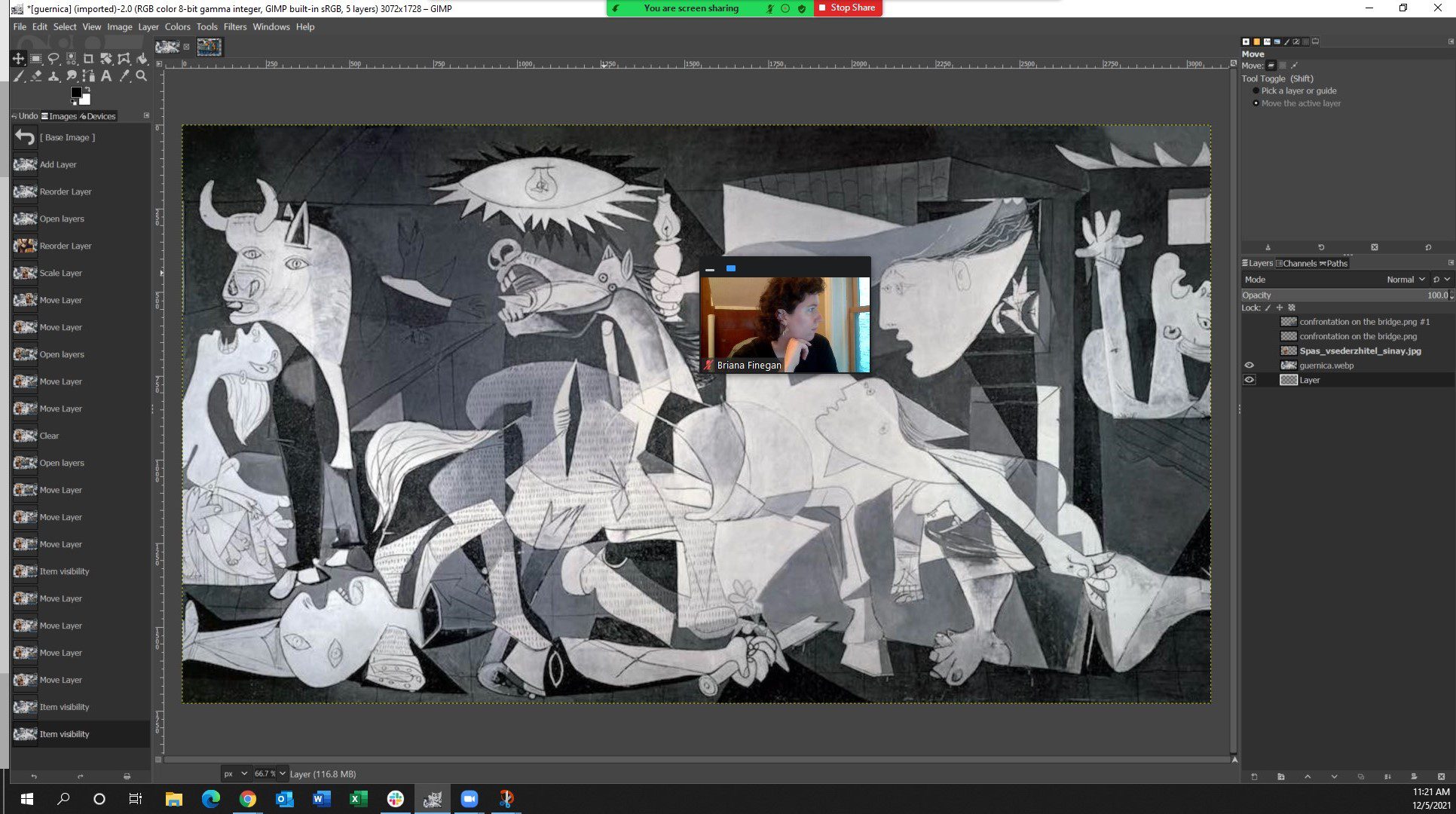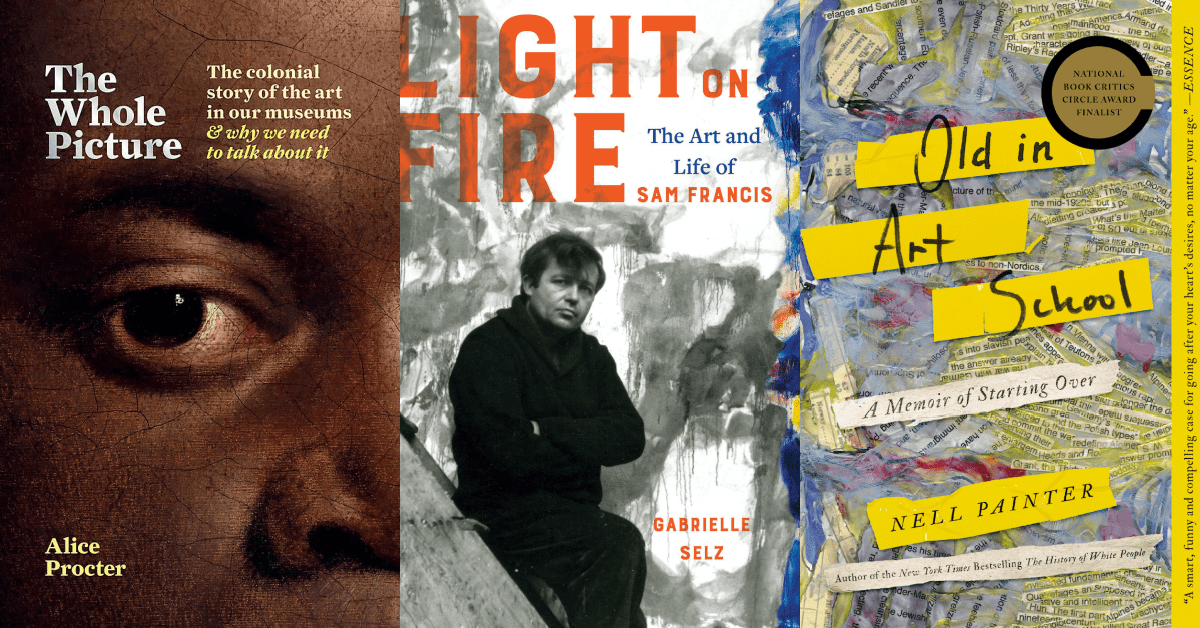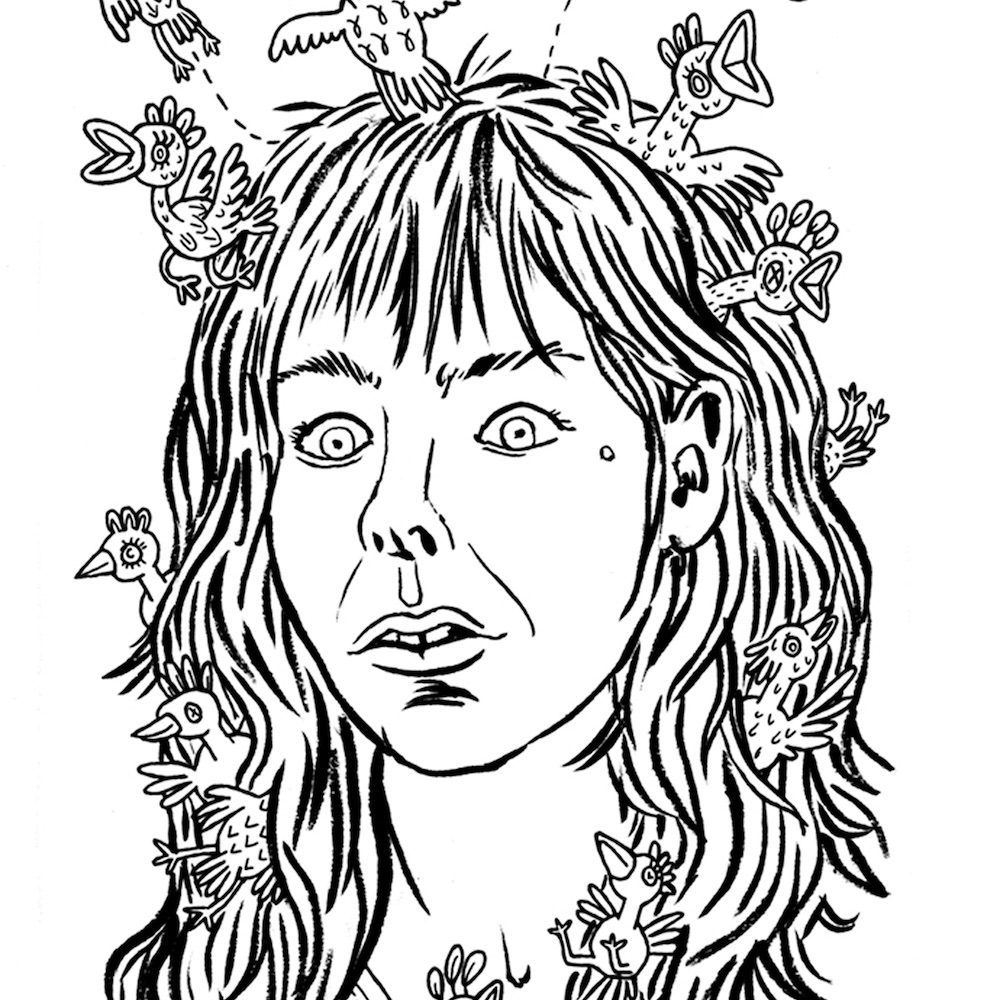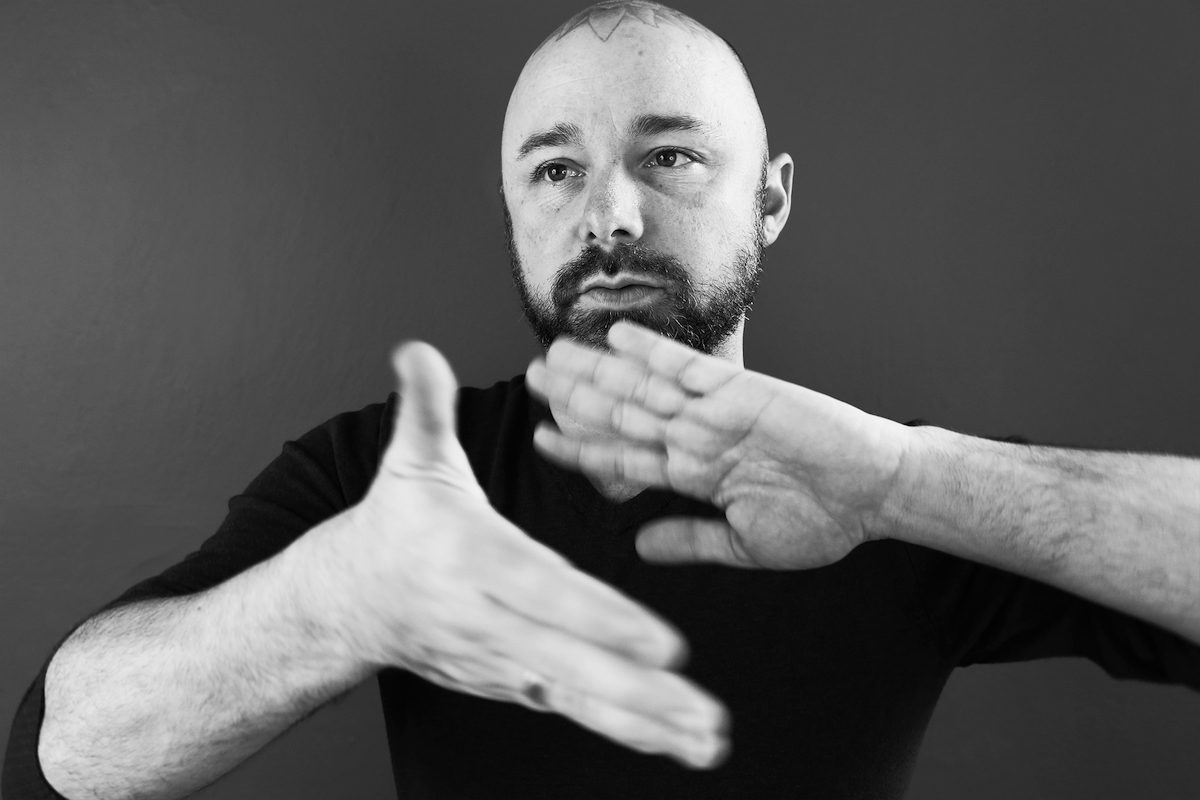“Erwin Blumenfeld‘s passion for technical audacity is perfectly exemplified in [this] Kodachrome shot… it was made in violation of Eastman’s exact and careful directions. Color-temperature theories were completely ignored. Yet Alexey Brodovitch, art director of Harper’s Bazaar, once said that he considered Blumenfeld the master of color, the one photographer who dared freely experiment in a new way.”
“Blumenfeld used a plaster reproduction of Houdon’s “Diana” and lighted it with two Keg spots, one equipped with a yellow glass filter, the other with blue. “Two separate exposures were made on the one Kodachrome sheet, each exposure determined by Weston meter reading. With the lens stopped down to f 45 the blue exposure was one minute and the yellow ten seconds.”
“Portrait a la Fresco combines a negative of a girl’s face with one of an old wall. Many trials had to be made before the wall contours and cracks added to rather than detracted from the head.”
“Partial solarization of a photo of a model close to a mirror is just one effect Blumenfeld uses — not to disguise a poor picture but to enhance a superb one.”
“Miss Raffael, a simple portrait treated in the manner of the Dutch masters, is an effect achieved by localized lighting on the face, short exposure to subdue shadow detail, contrasty development.”
“Blind Girl was photographed with the model covered by black cloth. That part of the negative was solarized.”
“Frozen Emulsion depicts the frozen motion of a dancer by the crystalline effect of drying the negative in the refrigerator.”
“Marau, a well-posed, well-lighted photograph, was normally developed and then reticulated.”
“A negative print from a completely solarized negative…”
“Diana of Houdon, a solarized negative of a broken plaster cast of Blumenfeld’s pet model, is here subjected to violent temperature changes after development, adding reticulation to solarization.”
“Erwin Blumenfeld worked in Holland, France, now New York. His studio includes fluted glass (see cover) and manikins.”
“Blumenfeld, confident of his technical mastery of color, tosses overboard all normal rules and wins applause for this portrait in unnatural colors. Contrary to nature’s harmony, highlights and shadows are cold; background only furnishes warmth.”
I scanned these from a 1944 issue of Popular Photography. The issue also includes an article by William Mortensen. I found four issues of the magazine at Long in the Tooth record store this weekend and I am very happy.
See some more works by Blumenfeld (1897 – 1969) at Bits & Bites.
Don’t miss Cary Loren’s article on Mortensen.















